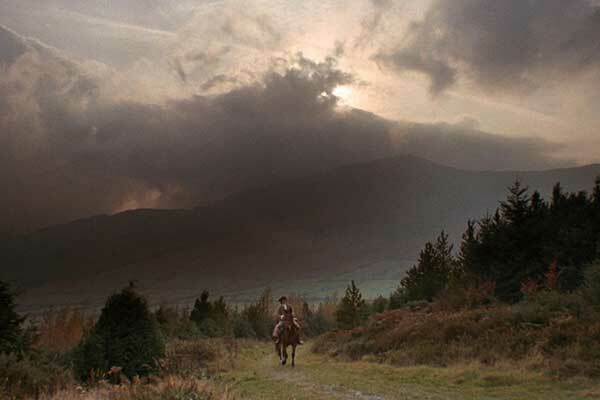THE MAGIC HOURS AND THE UNLUCK OF THE IRISH

“When the magic hour arrives, my thoughts center on light rather than on the landscape. I search for perfect light, then hunt for something earthbound to match with it.”
— Galen Rowell (American wilderness photographer, adventure photojournalist, and mountaineer)
“Stanley said right at the beginning that he didn’t want to use any artificial lighting at all... he wanted to shoot the whole film by natural light.”
— John Alcott, on Kubrick’s directive for Barry Lyndon
William Makepeace Thackeray’s The Luck of Barry Lyndon was adapted by Stanley Kubrick into a film released in 1975—almost exactly 50 years ago—and is currently enjoying a revival, with a 4K restoration playing in select UK cinemas.
Having written about the film several times already, I don’t feel especially compelled to say much more—particularly since it has already been the subject of far more probing analysis than I could offer, including the borderline esoteric Making Time in Stanley Kubrick's Barry Lyndon: Art, History, and Empire by Maria Pramaggiore.
Lately, though, two things have occurred to me about what makes the film so special. First, Kubrick’s remarkable ability to use natural light in ways that feel uncannily matched to each scene. And second, the film’s hypnotic portrayal of a character moving through landscapes and history, his fate unfolding in a seamless visual meditation on period composition that recalls the paintings of Constable and Gainsborough.
To the uninitiated, it might seem slow-paced and ponderous at times. But the more you watch, the more you marvel at how Kubrick frames each shot like a grand landscape painting—often almost static—while still delivering a subtle (and at times almost imperceptible) sense of forward propulsion in Barry’s journey from rural Ireland to the upper echelons of European aristocracy.
It’s like a magic trick—one I can only compare to something like Wagner’s Parsifal—where you surrender to the film’s own sense of time and space, as if its reality holds precedence over your own.

One thing all of Kubrick's films seem to share is a kind of god-like observance of his subjects—from the apes and astronauts in 2001: A Space Odyssey, to Barry Lyndon's tribulations, to the events that unfold in the Overlook Hotel in The Shining. This perfection-seeking, emotionally detached directing style creates a unique space in which the viewer can almost believe they’re watching something beyond the artifice of cinema—something transcendent.
A fascinating contrast to Barry Lyndon (1975) is Tony Richardson’s Tom Jones (1963)—two more different approaches to similar subject matter would be hard to find, and yet both are brilliant in their own style. It would have been easy for Kubrick to shoot Barry Lyndon more like his own A Clockwork Orange (1971), with its anarchic, idiosyncratic shot-making and pacing. But instead, by playing Thackeray's comic tale as a kind of slow-moving tragedy for the roguish Barry Lyndon, he arrives at the film’s karmic, circular conclusion:
You can travel as much as you like, but you can’t escape from yourself.
In this sense, Barry’s innate peasant flaws return to haunt him at the height of his social success, much like the monolith in 2001: A Space Odyssey (1968)—which serves as a symbol of an absolute truth, an inescapable reckoning he cannot avoid.